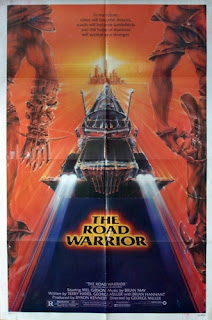 The tangibility of Mr. Ferris view is depended on one's position on the value chain. The higher his/her position in the value chain of their profession, the greater the emphasis is on completing the outcome with less importance on the process.
The tangibility of Mr. Ferris view is depended on one's position on the value chain. The higher his/her position in the value chain of their profession, the greater the emphasis is on completing the outcome with less importance on the process.
###
November 11, 2007
Too Much Information? Ignore ItBy ALEX WILLIAMS
AS one of Silicon Valley’s most respected entrepreneurs, Marc Andreessen is something of a connoisseur of what he calls productivity porn, or techniques to maximize personal productivity.
But in recent months, Mr. Andreessen a founder of Netscape Communications and more recently Ning, which allows users to create their own social networks has become enthralled with an unlikely purveyor: Timothy Ferriss, a boyish first-time motivational author from Long Island whose curriculum vitae includes stints as a competitive kickboxer and tango champion.
Mr. Ferriss’s business lessons, focused on cutting out useless information, have been culled from his six years running a modest sports nutrition company that sells, mostly over the Internet, supplements used by athletes to increase reaction speed and muscle power. Mr. Andreessen, a luminary in technology circles, does not seem to care.
Tim basically takes all of the time management and personal productivity theories of the last 20 to 30 years and
pushes them to 11, to paraphrase ‘Spinal Tap,’ Mr. Andreessen explained in an e-mail message. In Silicon Valley, Mr. Andreessen is not alone in his enthusiasm for Mr. Ferriss.
After reading Mr. Ferriss’s recent best seller, The 4-Hour Workweek (Crown), Jason Hoffman, a founder of Joyent, which designs Web-based software for small businesses, urged his employees to cut out the instant-messaging and swear off multitasking. From now on, he told them, severely restrict e-mail use and conduct business the old-fashioned way, by telephone.
/// It depends a lot on your business, your role, your responsibilities and the prioritization of your boss,All of a sudden, Mr. Hoffman said of the results, their evenings are free. All of a sudden Monday doesn’t feel so overwhelming.
Last spring, Jason DeFillippo, a founder of Metroblogging Global Blog Network a company that oversees more than 700 city-specific blogs heard Mr. Ferriss extol his low information diet to a crowd of high-tech devotees at a tech conference this spring. Before the speech was finished, Mr. DeFillippo, who lives in San Francisco, had ordered his book on Amazon. Soon after reading it, he embarked on a crash diet of his own. His nasty addiction to RSS feeds is now a thing of the past, he said.
It’s hard to describe, said Mr. DeFillippo, 36, but life was suddenly just more peaceful.
/// To simplify, minimize, and optimize one's life, start by building and connecting with a Tangible Vision that delineate a big picture with specifics. It must includes the prioritization of values and specific objectives.Mr. Ferriss, 30, has never run a technology company. He never made millions on an initial public offering. Rather, Mr. Ferriss, who now lives in San Jose, Calif., comes off more like a half-pipe snowboarder than a traditional lacquer-haired motivational guru.
Nevertheless, without appearing on Oprah Winfrey’s show or doing a book tour, Mr. Ferriss has seen his book quickly become a best seller, largely on the strength of blog chatter in the tech community. Subsequently, he has become a pet guru of Silicon Valley, precisely by preaching apostasy in the land of shiny gadgets: just pull the plug. Crawl out from beneath the reams of data. Stand firm against the torrent of information.
HIS methods include practicing selective ignorance tuning out pointless communiqués, random Twitters, and even world affairs (Mr. Ferriss says he gets most of his news by asking waiters). Work crisis? Pay someone else to worry about it ideally in Bangalore. On a bet, Mr. Ferriss even hired low-paid, high-skilled workers abroad to find him dates online. (It worked.)
Once the e-clutter is cleared away, he argues, there will be plenty of time to scuba dive the Blue Hole in Belize, just as he does.
Or at least fantasize about it.
The technology community, after all, shares a great desire for escapism, said Fabio Rosati, the chief executive of Elance in Mountain View, Calif., which provides outsourcing for professionals and small businesses and now features Mr. Ferriss giving an unpaid video testimonial on the company’s Web site. This is why everyone is working 14-hour days in the first place: to strike it rich and cash out.
But Mr. Ferriss is selling the alluring promise that you don’t have to wait for the monster, and perhaps mythical, initial public offering.
As Mr. Rosati said: Silicon Valley is unique in that there is a deep entrepreneurial spirit and a highly ambitious workforce, but they’re always thinking, ‘Gee, if I could only squeeze an extra hour out of the day, I could actually go on that bike ride, I could actually go surfing.’ Tim is evangelizing that lifestyle.
Not that everyone in the Bay Area is sold. Po Bronson, author of The Nudist on the Late Shift: And Other True Tales of Silicon Valley (Random House, 1999), agreed that Mr. Ferriss’s book had made a mark in the tech world. You can’t seem to go two hours without someone mentioning it, he said.
Still, Mr. Bronson said he didn’t know anyone who had actually read it, much less abandoned a cubicle to study yabusame (horseback archery) in Japan, as Mr. Ferriss did last month. What has really turned heads is not the specific ideas, Mr. Bronson speculated, but its provocative title. In Silicon Valley, the promise of a lifestyle revolution or hyperbole to that effect will always find an audience.
It’s not saying the ‘20-Hour Workweek,’ Mr. Bronson explained. That would be something that lots of people can live. It’s 40 hours a week versus four.
It’s very important in the tech world that consequences are exponential, not geometrical.Like most motivational gurus, Mr. Ferriss gives readers a dramatic back-story filled with recollections of the grim days in which he was lost in the wilderness or at least the Internet cafes of Florence, Italy, working 10-hour days on his supplements company in 2003 instead of enjoying what was supposed to be a vacation. Following the predictable arc, he then offers his road-to-Damascus story of enlightenment, wherein he rebounds out of a work-induced nervous breakdown with a vow to eliminate everything that was standing in the way of happiness starting with his Treo.
BlackBerrys and e-mail aren’t inherently bad, he said. It’s just like medicine: it’s the dose that makes the poison.
Putting his beliefs into action, he said, he set about dumping all the clients who involved more work than they were worth. He reduced and outsourced his staff, from 250 eventually down to fewer than 15, and instructed underlings to deal with all but the biggest emergencies themselves.
Most fundamentally, Mr. Ferriss turned ruthless against e-mail. He hired personal assistants in India and the Philippines to sort through and respond to most of it, and ignore the rest. Even today, he said, he typically checks e-mail messages only once a day, at 2 p.m., and only sees those few urgent ones his outsourced assistants forward to him. (He is, however, very quick to respond to media requests, in this reporter’s experience.)
With all the time left over, he said, he has lived the life that most postpone until retirement. In the last two months alone, he said, he has traveled to Scotland, Sardinia, Vienna and Bratislava, as well as Japan, all while technically running a company that he claims kicks off a high five-figure personal income every month.
It’s this have-your-cake-and-eat-it-too tale that has made even the jaded tech establishment take notice.
Robert Scoble, who writes the influential tech blog Scobleizer, praised Tim Ferriss’s approach, as just another techie trying to dig out from under the information rubble.
Our lives are just getting busier, the world is starting to throw more stuff at us, he said. Five years ago it was still pretty rare to have relatives sending you IMs. No one had Flickr feeds or Twitter. YouTube, Facebook and MySpace didn’t exist.
Unsurprisingly, some Tim Ferriss acolytes found that
sticking to his information crash diet brought a shock to the system./// Your grand goal, your profession, your position and the market change determines your informational intake.Ryan Carson, 30, who runs technology conferences around the world from his headquarters in Bath, England, said that since reading The 4-Hour Workweek, it can take me two or three days to get back to people on e-mail.
People will get a little angry, he admitted.
More strikingly, Mr. Carson shifted his company, Carsonified, to a four-day workweek after hearing Mr. Ferriss speak at the South by Southwest media and technology conference in Austin, Tex., in March.
I just thought, who made these rules you have to work five days a week? Mr. Carson said. His employees now churn out five days’ worth of work in four, in part because of reduced distractions. (You can believe that they are now Ferriss fans, too, he said.)
Critics might argue that Mr. Ferriss is hardly the first self-improvement guru to preach the clutter-free life. Indeed, it’s possibly the most overused self-help trope.
Even his admirers, like Mr. Andreessen, scoff at the idea that anyone in Silicon Valley least of all the busy Mr. Ferriss could ever realistically slash office face time by a factor of 10 or more.
Indeed, Mr. Ferriss makes little pretense of practicing what he preaches, at least if you count self-promotion as work.
LAST Monday alone, Mr. Ferriss who has served as a guest lecturer on high-tech entrepreneurship at his alma mater, Princeton, for several years spoke at Harvard Business School, followed by an afternoon doing an interview about his book, then finally another talk in front of 130 students at M.I.T. Mr. Ferriss, ever stimulated by yerba mate tea, was still there, hashing out personal-productivity theories over beers with Sloan School of Management graduate students at 11 p.m. on Monday night. All this, while recovering from jet lag after a flight from Japan, where he had taped a pilot for a television show part self-help, part adventure travel developed for the History Channel.
If your definition of work is something primarily financially driven that you would like to do less of, like with my company, I spend far less than four hours a week on it, he said.
All that other stuff lecturing at the corporate campuses of Google and PayPal, blogging incessantly on his www.fourhourworkweek.com that’s, well, evangelizing, he said.
Which is not to say he plans to become an Anthony Robbins for the geek set, touring relentlessly and hawking DVDs on late-night infomercials.
I’d be much better off putting my time into three or four really good blog posts, he said.
But, of course. That would take much less work.
Copyright 2007 The New York Times Company
http://www.nytimes.com/2007/11/11/fashion/11guru.html













